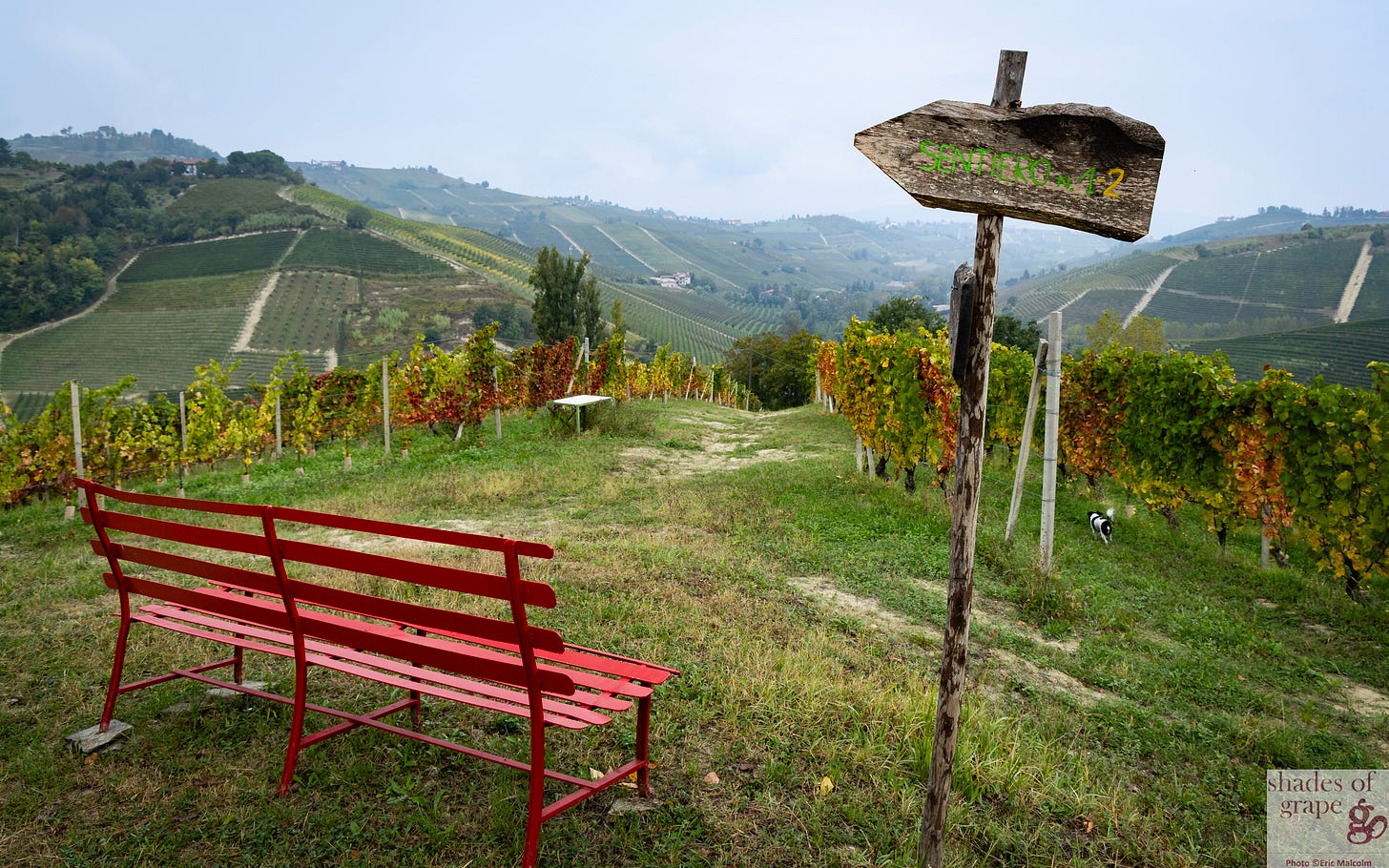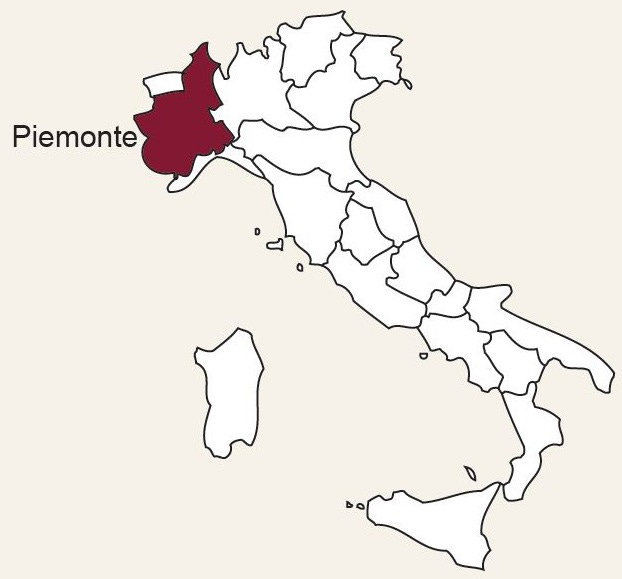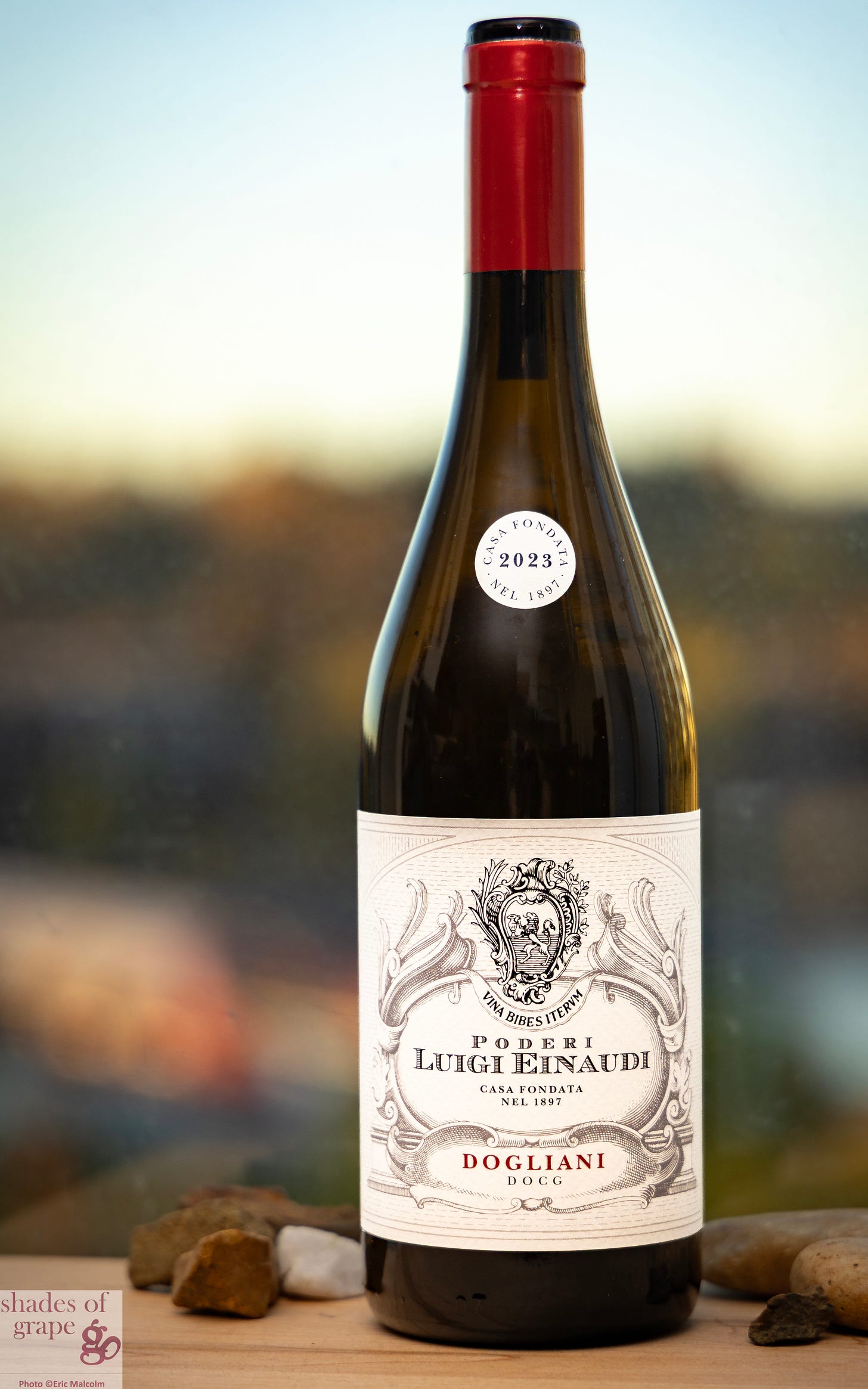Italy’s First President Made Dolcetto Wine
- piemonte, tannin extraction & more
Fall is officially here! We all need replenishing of our wine supply!
Interested in one-on-one curation time with me? No commitment or minimum purchase required. Flexible appointment times including weekends. Drink better!
HEADS UP! I have found out that I am very cheap compared to other Substack wine writers. I will increasing my rate soon - so if you are debating becoming a paid subscriber do it now and SAVE!
Subscribing is a way to show your appreciation for:
my wine recommendations,
any assistance I provide along your wine journey, or
my writing entertainment!
As wine professionals we try to be as neutral as possible and not let our personal preferences interfere with our wine evaluations.
How can you do that? You either like the wine or you don’t.
But it is not about me. It is about the wine. I follow the WSET SAT (Wine Spirits & Education Trust – Systematic Approach to Tasting) which is systematic as the name implies, to be as analytical as possible. When followed, one should be able to draw conclusions that objectively assess the quality of the wine.
So whether it falls under my personal preferences as a human is moot.
I think the word is moo.
Oh boy.
But when it comes to today’s grape, Dolcetto, I have to say I have struggled.
Wow you sure are selling this article and the topic!
Well, again, I am being objective.
Are you? I am getting mixed messages.
Sometimes I believe Dolcetto’s fruitiness lacks balance which makes it dull…. Part of the problem is that it has thicker/darker skin which means it naturally has higher tannins.
Why?
The grape’s skins, stems, and seeds are the source of tannins in wine. So the thicker the skins the higher the proportional amount of tannins possible in the wine, depending on the amount of extraction during winemaking.
You can control that?
Yes, most of the tannin extraction occurs when the alcohol is present since the alcohol acts as a solvent, pulling the tannins out of the skins. Therefore the amount of extraction depends on how long the skins, seeds, and stems (if the grapes are not destemmed) are in contact with the wine after fermentation begins. It also depends how slowly the fermentation is allowed to progress (using temperature to control the fermentation rate).
The skins, seeds, and stems float to the top of the vessel during fermentation as the CO2 (byproduct of fermentation) pushes these solids upward. These solids are called a cap. Cap management is the method used to keep the juice in contact with the cap to allow extraction of flavours and aromas. How gently the cap is managed will also impact the tannin extraction.
Dolcetto means “little sweet one” although the wine is made dry (almost always!). The name comes from its relatively lower acidity, which gives a perception of sweetness while tasting the grape.
This lower acidity is also why they have to manage the tannins to ensure balance within the wine’s structure. The result is a softer, rounder, more fruity wine, which in my opinion sometimes lacks depth.
Okay that sounds objective.
Thanks for the feedback!
I found a Dolcetto I want to write about! Okay let’s start from the beginning.
Dolcetto is not grown in many places in the world. According to Italian Wine Central website 98% of Dolcetto is grown in Piemonte, Italy.
You have written about Piemonte before.
Indeed. I visited Piemonte last fall. This is the region in northwest Italy that also grows Barbera and Nebbiolo, which are also black grapes. Nebbiolo is the grape in Barolo and Barbaresco red wines. The main white grapes are Moscato and Cortese. Cortese is the grape in Gavi wine.
Right, it’s all coming back to me.
One of the subregions that grows Dolcetto is called Dogliani. This is where the featured wine comes from. There are many other subregions within Piemonte where it can be grown namely: Acqui, Asti, Diano d’Alba, Langhe Monregalesi, Alba, and Ovada. These last two and Dogliani are the subregions most important for Dolcetto.
Within Dogliani exist 76 crus, meaning small geographical areas within the subregion that are know for quality.
This is not a wine that is intended to age. Although the ones from better sites in Dogliani or Ovada can age a little more.
Tell me about the producer of the featured wine.
Gladly – this is such a fun story.
Poderi Luigi Einaudi was founded in 1897 by its namesake Luigi Einaudi (1874-1961), when he bought a farm in Dogliani called San Giacomo, including 16 acres of vineyards. He was 23 years old.
The poderi (“farm” in Italian) has been in the Einaudi family for 4 generations, with a son or daughter taking over at each generational handoff.
I was awestruck when I learned that Luigi was the first democratically elected President of the Republic of Italy in 1948, his term lasting until 1955.
That is President Luigi to you!
While running the winery, he was also a professor in Public Finance at universities of Turin and Milan-Bocconi and in Political Economy at the Turin Polytechnic. He also wrote newspaper articles for many Italian and foreign newspapers. Eventually he got involved in politics. After World War II, he was appointed governor of the Bank of Italy and then turned to politics, which led to his presidency in 1948. It was said he never missed a harvest despite these demanding positions in Rome.
Today Matteo Sardagna, Luigi’s great-grandson, owns the winery.
To whom would you recommend your featured wine?
Someone who is looking to pair a wine with Thanksgiving Turkey. This wine is very approachable, so this could be a great wine for someone who is new to wine.
Bring it!
Enjoying my recommendations? Consider upgrading to a paid subscription.
Poderi Luigi Einaudi Dogliani 2023 from Piemonte, Northwestern Italy
Style: Dry Medium Body Red Wine
Varieties: 100% Dolcetto
This fruit forward wine has intense flavors of sweet cranberry, raspberry compote, blueberry, baking spice (cinnamon in particular), a touch of herbal and earthy notes. This wine has a smooth texture, moderate tannins with a slight grip, and a persistent finish.
Best pairings: Turkey dinner, Stew, Soup, Agnolotti al plin with butter & sage sauce or mushroom sauce, Moussaka, Pizza, Ratatouille, Bruschetta, Cheese: Pecorino or Fontina
Serving Temperature: 13-15 degrees Celsius
Serving Tips: Enjoy
Price: ~$27 Cdn
If you're in Alberta and want a one-on-one wine curation experience, please reach out! No commitment or minimum purchase required. Interested? Please reach out!
A huge thank you to my paid subscribers—your support helps cover the costs of creating these weekly articles.
Love my wine recommendations? Enjoy my personal wine curation service? If you find value in my writing, consider upgrading to a paid subscription to help me keep sharing the world of wine with you!
Subscribers receive 15% off Wine & Spirits whenever shopping at Cork Fine Wines, ground floor, Bow Valley Square in Calgary.
SOURCES:
Consorzio di Tutela Barolo Barbaresco Alba Langhe e Dogliani (2024). https://www.langhevini.it/en/.
D’Italia, B. (no date) Banca d’Italia - Luigi Einaudi. https://www.bancaditalia.it/chi-siamo/storia/governatori-direttori-generali/governatori/luigi-einaudi/index.html?com.dotmarketing.htmlpage.language=1&dotcache=refresh.
Empson (2019) Poderi Einaudi | Empson & Co. https://www.empson.com/wine_producer/poderi-einaudi/?utm_source=chatgpt.com.
Harding, J. and Robinson, J. (2023) The oxford companion to wine. Oxford, United Kingdom: Oxford University Press.
MacNeil, K. (2022) The wine bible. New York, NY: Workman Publishing.
San Giacomo Vineyards, Dogliani - Poderi Luigi Einaudi - Dogliani, Langhe (2023). https://www.poderieinaudi.com/en/wineyards-langhe-estates/san-giacomo-vineyards-dogliani/?utm_source=chatgpt.com.
The Editors of Encyclopaedia Britannica (1998) Luigi Einaudi | Italian statesman, economist, Nobel laureate. https://www.britannica.com/biography/Luigi-Einaudi.
Wine & Spirit Education Trust (2021) D3: Wines of the World - An accompaniment to the WSET Level 4 Diploma in Wines. Version 1.2. London: Wine & Spirit Education Trust.





I make Dolcetto from a grower in Lake County, Kelsey Bench AVA specifically. It's a pain to get right. The tannin thing is a real struggle. Pumpovers/remontage only and generally only once per day past day three. I prefer a quicker fermentation time if possible and a very light press-out on the skins. I have found in blending trials that it can work very nicely with a lower tannin Cabernet Sauvignon to give it texture and mouthfeel.
Bottle age has shown to be an ally in this fight against tannin. I'm enjoying my Dolcetto more as it ages, 2022 and beyond are better today than they were on release. Also, extended barrel time (when economically feasible) is a benefit to these wines.